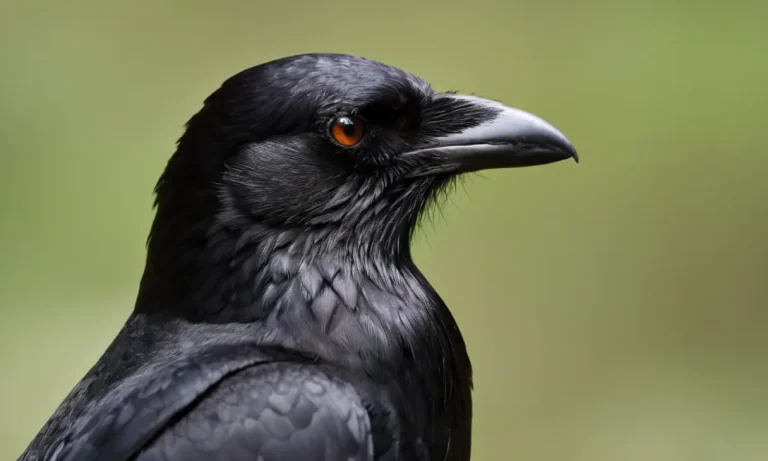Chicken Symbolism and Meaning

Chickens have captivated humanity’s imagination for thousands of years. These peculiar fowls have come to represent a rich tapestry of symbolic meanings across cultures and eras, from fertility and sustenance to cosmic divination.
In this comprehensive guide, we’ll explore the origins and evolution of chicken symbolism, unpacking how these quirky birds came to embody community, destiny, the divine feminine, and even the afterlife.
Whether you’re simply curious or tracing a specific symbolic meaning, read on for a deep dive into the timeless mystique of the chicken.
A Brief History of Chicken Symbolism

The ancestral junglefowl that became modern chickens were first domesticated over 8,000 years ago in Southeast Asia.
These birds gradually spread around the world with trade networks and migratory patterns, arriving in Europe and the Middle East around 3,000 BCE. Ancient Egyptians and Babylonians became the first to extensively breed chickens, establishing them as a vital livestock species.
With their consistent egg-laying and easy domestication, chickens quickly embedded themselves into the daily rhythms and cultural cosmologies of early agricultural communities globally.
Over the millennia, specific symbolic meanings have emerged and evolved across spiritual traditions:
- Fertility & Nurturing – Ancient associations with maternal care and community sustenance
- Sacrifice & Divination – Ritual offerings to gods for favor and revelations
- Afterlife Guidance – Passage into rebirth and the world beyond
- The Divine Feminine – Goddess imagery linking chickens to womanly power
- Abundance & Domesticity – Prosperity from the land to household hearths
These diverse interpretations continue to shift today as billions of chickens spread across backyards and factory farms worldwide.
Now, let’s dive deeper into some core symbolic meanings.
Nurturing Mother and Community Caretaker

One of the most ubiquitous symbolic roles assumed by chickens across history is that of the nurturing mother and community caretaker.
In Native American tribes like the Hopi, the chicken took on rich meaning as an emblem of fertility, abundance, and maternal caregiving. New mothers would often don special chicken aprons or dance with chicken effigies to honor their ripening femininity.
“The hen and her eggs became a central metaphor for the coefficient forces that propagate and nurture life.” – Barbara Walker, The Woman’s Encyclopedia of Myths and Secrets
This association with maturing fertility also appears in West Africa, where girls entering puberty fed and cared for chickens as part of their rite of passage into womanhood. The chicken’s prolific egg-laying connects it to ideas of ripening, thereby transmitting cultural values of caretaking.
“When a little girl reaches adolescence, it is traditional for her to care for chickens as symbolic preparation for responsible womanhood and mothering.” – Toyin Falola, Culture and Customs of Ghana
Beyond personal fertility, the chicken’s communal roosting habits cast them as caretakers presiding over the general welfare of homesteads and villages.
In agrarian societies globally, the industrious chicken came to epitomize small-scale pastoral life – the centrality of farming communities bound by seasonal rituals of tilling, harvesting, and sharing sustenance.
Beyond material needs, folk legends like “Henny Penny” also portray chickens as responsible leaders warning communities of impending threats.
Key Highlights
- Symbol of female fertility & maturation
- Caretaker of communal welfare & sustenance
- Guardian of overall abundance and safety
Whether through nourishing eggs, signaling danger, or embodying prosperity, the humble chicken has accrued broad meaning as the guardian of people and place.
Sacrifice, Divination, and Destiny

The symbolic chicken also journeys from sustaining daily life to illuminating cosmic forces beyond it.
In multiple ancient traditions, including Greco-Roman paganism and West African Vodun, ritual sacrifice of chickens enabled divination – the unraveling and interpretation of destiny’s obscured machinations.
By sacrificing chickens and reading their patterns in flight or organs in death, priests and shamans sought to commune with deities to reveal outcomes of weather, fertility, battle, and more.
“We offer this chicken to glorious Ogun in return for protection and victories in the battles ahead.”
The chicken passed from sustaining earthly realms to unveiling the operations of the divine, acting as a messenger linking physical and metaphysical worlds.
While controversial today, animal sacrifice was an attempt to peer beyond the veil of reality and glimpse the hidden forces shaping collective fate.
In contemporary Vodun practice, such rituals continue, with chicken sacrifice allowing contact between human needs and cosmic entities. By offering the chicken’s life, blessings and insights flow between realms.
Key Highlights on Chicken Symbolism
- Associated with divination and fate
- Enables human-divine communion via sacrifice
- Reveals the will of the gods & direction of destiny
So through intimate proximity with people, chickens bridged the mundane and sublime, channeling cosmic knowledge to illuminate opaque destinies.
Underworld Guide and Rebirth

The chicken has also assumed a psychopomp role in mythologies globally – guiding departed souls into the afterlife.
In ancient Egyptian tombs, mummified chickens were buried alongside human mummies to act as helpful spirit guides to the next world. Hieroglyphic spells within the Book of the Dead describe shapeshifting into chicken form for immortal passage into the afterlife.
“I arrive as a hawk, I depart as a phoenix, transforming in the sacred manner of a chicken so that I might traverse into eternal life.”
So in Egyptian spirituality, the chicken enables a transition from mortality to rebirth. They accompany and protect the soul through darkness into light – dying to help usher humans to resurrection.
Elements of this theme continue even today in Day of the Dead festivals, where skeleton chickens and roosters represent the unknown destiny awaiting souls after death. People don ornate alebrije chicken sculptures both to honor the dead and symbolically signify the enduring continuity between mortal endings and the perpetual cosmic cycle of spiritual awakening.
Key Highlights on Afterlife Symbolism
- Psychopomp – Guide to the Egyptian underworld
- Mortality to Resurrection – Enables rebirth after death
- Destiny in the Hereafter – Day of the Dead iconography
Through this mythic role as guardian and hierophant to human souls, the chicken channels the luminous mystery of eternity.
The Divine Feminine
Various goddesses from Isis to Athena also appear iconographically linked to chicken symbolism, tying these birds to the nourishing power of the feminine divine:
Isis – Egyptian paintings and reliefs frequently depict this goddess adorned with ostrich feather and chicken headdress to signify her maternal care for the people.
Athena – As goddess of wisdom and protection, Athena bears a similar feathered cloak marked by speckled, chicken-like patterns to channel her guardianship.
Aphrodite – The Greek goddess of beauty holds the epithet Aphrodite Tymborychos – “Aphrodite of the Buzzing Chickens” – since sacred fowl were kept in her temples.
Whether manifesting as Isis, Athena, Aphrodite or the archetypal earth goddess, the symbols of womanhood intermix fluidly with chicken iconography, binding femininity to this animals’ subtle strength and sustenance.
Key Highlights on Divine Feminine Symbolism
- Links goddess energy to protection and abundance
- Nourishing iconography (feathers, patterns, temple chickens)
- Epitomizes the generative power of the divine feminine
So through ties to goddess culture for millennia, the chicken channels the profound, oft overlooked depth of feminine power.
Frequently Asked Questions
What is the history of chicken symbolism?
Chickens have been symbolically significant for thousands of years, first domesticated in Southeast Asia over 8,000 years ago. They spread globally and were extensively bred by civilizations like the Egyptians and Babylonians. Chickens have represented fertility, sacrifice, divination, the afterlife, and the divine feminine.
What are some core symbolic meanings associated with chickens?
Chickens symbolize nurturing motherhood, communal caretaking, divination, destiny, the afterlife, and the divine feminine.
How have chickens been connected to fertility and maternal care?
Chickens represent nurturing motherhood and caretaking within communities, symbolizing female fertility, abundance, and communal welfare.
What role have chickens played in divination and destiny?
Chickens have been used in sacrificial rituals for divination, offering insights into destiny and cosmic forces.
How do chickens symbolize the afterlife and rebirth?
Chickens act as psychopomps, guiding souls into the afterlife. They represent the transition from mortality to rebirth and are present in Day of the Dead festivals as symbols of destiny and spiritual awakening.





